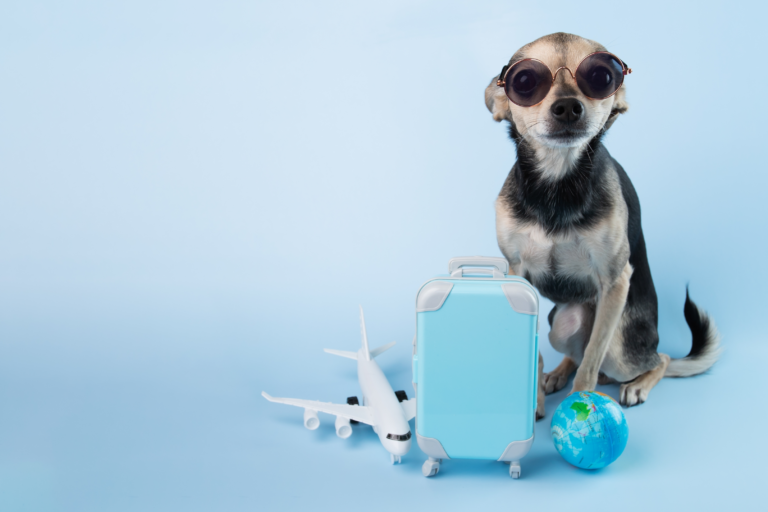The Reality of Relationships
I’ve been thinking a lot lately about relationships. For the most part, relationships don’t just happen. I’m not talking about those once-in-a-lifetime, lightning-strike, romantic miracles you occasionally might hear about! What I’m referring to here is the reality of relationships we build with our travel clients. That reality cannot be over-emphasized: Not only do client relationships dictate which businesses will thrive, but they also indicate which ones will fail to survive. Nothing is more important to the sustainability of your travel business than the quality of the relationships you build with your clients!
SIDE NOTE: An Unprecedented Opportunity—A Small Window of Time
As travel advisors, we—at this very moment—are facing the most dramatic opportunity in history to grow business! Consumers who have never before used a travel agent are now franticly seeking competent and professional travel planning and advice. This is due to the current complexity of travel around the world, as a result of the global pandemic. Today’s travelers are ill-equipped to go it alone or even attempt to navigate the diverse travel requirements and perplexing regulations that currently exist the world over. The risk is simply too great for travelers to tolerate! This moment, however, has arrived with built in obsolescence, which means, we will miss the opportunity, unless we immediately focus, make a plan, and take action to ensure our customers become our customers for life!
There is a finite list of must-haves that collectively compose the foundation of optimal client relationships. This foundation is not built overnight. Rather, it’s built through a process that’s dependent upon intentionality, consistency, and diligence. To clarify what I mean here, I’ve developed a relationship self-test in the form of questions you can ask yourself to determine whether you have a solid foundation for lasting client relationships.
SELF-TEST
- Do I not only talk the talk, but also walk the walk, so that my clients know they can trust me to do the right thing?
- Do I gather all the information necessary to truly understand who my clients are and what they need and want from me?
- Do I always listen well to my clients, and ask questions to clarify their goals and expectations?
- Do I demonstrate a respectful, “we’re-in-this-together,” collaborative spirit when working with my clients?
- Do I have efficiencies in place to ensure I’m always responsive and accommodating in a timely fashion?
- Do I exhibit excellent follow-through at every point of the travel-planning process?
- Do I systematically anticipate opportunities to add value and exceed my clients’ expectations?
So, how did you do? If you honestly answered YES! to all the questions in the test, there’s no need for you to read further. You’ve got this!
However, if your answer was SOMETIMES, I DON’T KNOW, or NO—stay with me here, and I’ll take you through the relationship-building process—step by step!
STEP-1
The time to begin building a lasting connection is the very first moment of the first exchange you have with a potential customer—whether in person or on the phone! Rather than diving in to expound on your business, your professional competency, and your track record of success, this is the perfect opportunity to make a true connection with the caller. As strange as it may seem, any time you can get people to talk about themselves, they will naturally feel more connected to you. Through that process, you will begin to garner what you need to know about the person(s) who will be travelling. However, if you find that the caller is seriously interviewing agents, as opposed to simply kicking tires, be prepared to answer questions about how you work, what sets you apart, and why you are the best choice. Take notes on everything said and every impression you get, so that you can gain a sense of the type of person you are dealing with. Ask every question necessary to understand what the caller values most, as well as get a comprehensive picture of expectations—from budget requirements to physical capabilities and recreational druthers to food preferences. As you learn what the person values, expects, and needs, you can position yourself as the best agent for the job. Then, plug all of the information you’ve gathered into an easy-to-use format for ready access. This will help ensure you don’t forget anything, which—in turn—demonstrates that you are a good listener. Are you beginning to see what I mean about intentionality’s role in building the foundation for relationships?
STEP-2
If the first step went perfectly and the caller decided to sign up with you immediately, skip this step and proceed to step-3. In most cases, though, winning a new client is not that simple! It’s always much easier to keep your existing clients happy, than it is to get a new one! A few days after the initial exchange, call or email the potential client to follow up the discussion. Express appreciation for the opportunity to discuss your services and inquire about other questions you might answer. If there is no response, you might follow up a couple of more times with a link to your website or newsletter, and perhaps a client testimonial or two. It’s important to learn how to distinguish a tire kicker from an actual potential client who might be interested in working with you, but not quite ready to begin the trip-planning process! Once the person verbally commits to you, refer to the intake form, fill in any missing information, and move on to the next step.
STEP-3
Now that you know the needs and wants of your wannabe traveler, it’s time to get to work and seize the opportunity to manifest your professionalism and worthiness of trust! I start by following up with a gracious, thank-you email, along with my Travel Services Agreement, Terms and Conditions, Planning Fee Agreement, and form to authorize payment of my planning fees. My message defines each of these agreements and suggests that the person call me for clarifications, if needed. If you do not charge fees, you would, of course, omit the Planning Fee Agreement and send the other agreements after your client agrees to the trip itinerary, but before making trip payments. Having all relevant legal contracts in place and immediately making them available in your follow-up message clearly indicate your promptness, proficiency, and attention to detail—all of which will nudge your client toward a trusting relationship with you.
STEP-4
After the person has signed your contracts, and you officially have a new client, it’s time to prove the real benefits customers get from their relationship with you! Pat yourself on the back for acquiring a new client, and get to work by issuing a cordial welcome email and expressing your appreciation for having been chosen to fill the client’s needs. From this point on, your actions and communications will be a testament to your efficiency and ability to seamlessly manage the myriad details required throughout the process. Your proficiency will help solidify the client/advisor relationship and validate the client’s decision to go with you!
STEP-5
Follow up with the client at each juncture in the planning process. Each email you send should be well-written, cordial, clear, helpful, and timely, so as to further deepen the relationship. The goal is for the client to see you as being fully capable, worthy of trust, and one who is not going to let anything slip through the cracks! This is the stuff good customer relations are all about! Whether you’re touching base to ensure the client has opted in to travel insurance, checking on excursion finalizations, providing tips on packing, reminding the client of payment deadlines, or making suggestions for cool places to visit, your diligence can ensure your relationship is invaluable. If the client accepts or rejects travel insurance, make sure you obtain the signed Travel Insurance Waiver. Don’t forget that your offer of over-and-above concierge services, such as making restaurant recommendations and reservations, can enhance the client’s experience, as well as increase your profits. Yes, I charge fees for extras like this!
STEP-6
I never consider my job to be finished, even after my clients have safely returned home. The final step in my relationship-building journey is an ongoing one! After all, as I said earlier, it’s much easier to sustain the relationships you have, than to establish new ones! Even after I’ve built a firm foundation for each relationship, I never lose sight of the value of regular maintenance for sustainability. When a journey has ended, I always send a Welcome home message and encourage referrals, sometimes procure a testimonial for my website, and often follow up with suggestions for the future that match the client’s travel profile. Over subsequent weeks and months, I continue to reach out and stay in touch, for I want all of my clients to know that I’m ready and waiting for them to get the travel bug, again! My ongoing reward for my commitment, diligence, intentionality, and consistency is that my clients are—indeed—my clients for life!
How about you? Have you made client relationships a priority in your business? Have you put systems, processes, contracts, and communications in place that will maximize efficiencies, seamlessly manage details, ensure protection, and solidify relationships? If not, don’t you think you should? After all, as travel advisors, we are in the relationship business—and everything we do relates to that! And by the way, if you need help along the way, TIS has solutions you can implement for each and every step!


